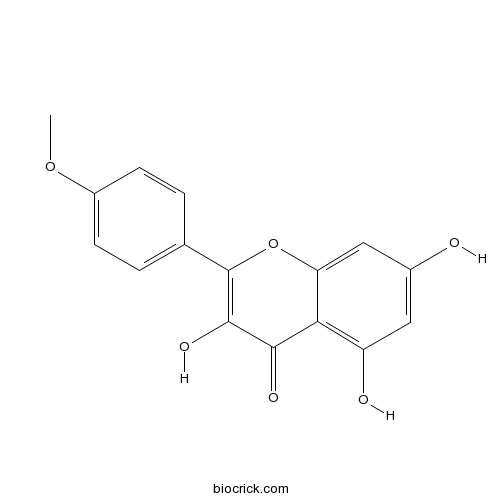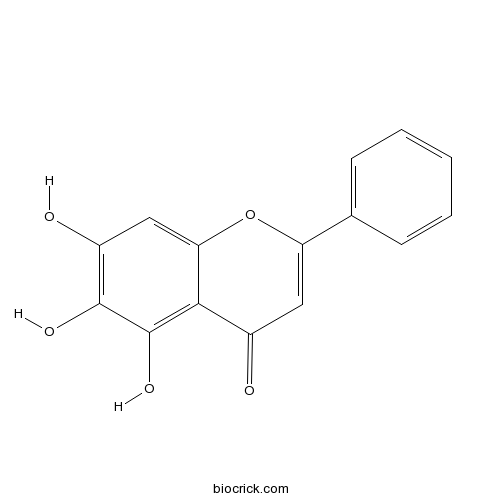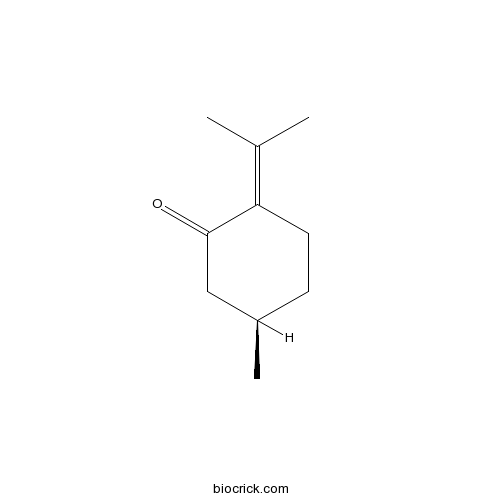Ziziphora clinopodioides
Ziziphora clinopodioides
1. The products in our compound library are selected from thousands of unique natural products; 2. It has the characteristics of diverse structure, diverse sources and wide coverage of activities; 3. Provide information on the activity of products from major journals, patents and research reports around the world, providing theoretical direction and research basis for further research and screening; 4. Free combination according to the type, source, target and disease of natural product; 5. The compound powder is placed in a covered tube and then discharged into a 10 x 10 cryostat; 6. Transport in ice pack or dry ice pack. Please store it at -20 °C as soon as possible after receiving the product, and use it as soon as possible after opening.
Natural products/compounds from Ziziphora clinopodioides
- Cat.No. Product Name CAS Number COA
-
BCN5893
Rosmarinic acid20283-92-5
Instructions

-
BCN5598
Kaempferide491-54-3
Instructions

-
BCN5599
Baicalein491-67-8
Instructions

-
BCN3856
Pulegone89-82-7
Instructions

Ziziphora clinopodioides ameliorated rheumatoid arthritis and inflammatory paw edema in different models of acute and chronic inflammation.[Pubmed: 29793335]
Ziziphora clinopodioides has been used in traditional medicine for its anti-inflammatory properties. Current study is believed to first time report the potential of Z. clinopodioides extracts to ameliorate joint inflammation using model of chronic joint inflammation (FCA-induced rheumatoid arthritis). The study further investigates the effects on joint inflammation using acute inflammatory paw edema models. The anti-inflammatory effects were also supported by using xylene-induced ear edema model. Results showed that Z. clinopodioides significantly ameliorated rheumatoid arthritis as indicated by the inhibition of arthritic development and paw edema. Histopathological examination showed significant attenuation in pannus formation, bone erosion, and joint inflammation. Treatment with the plant extracts also nearly normalized counts of RBCs, platelets, and total leukocytes along with hemoglobin (Hb) content. Biochemical analysis (AST, ALT, urea, and creatinine) showed that plant extracts did not possess hepatotoxic or nephrotoxic effects. Water displacement plethysmometric analysis showed that Z. clinopodioides significantly attenuated carrageenan-induced paw edema. To evaluate the mechanism, anti-inflammatory effects were further evaluated using histamine- and serotonin-induced inflammatory paw edema models. Z. clinopodioides significantly suppressed paw edema induced by both histamine and serotonin, and also caused the inhibition of xylene-induced ear edema. This suggested the inhibition of autacoids as one of the mechanisms of anti-inflammatory effects of plant. GC-MS analysis showed that the plant is rich in essential oils, including terpenoids, esters, alcohols, furans, cyclic ketones, epoxides, oxanes, and acyclic hydrocarbons. In conclusion, current study demonstrated that Z. clinopodioides possessed significant anti-arthritic and anti-inflammatory properties which might be attributed to the inhibition of autacoids.
Identification and screening of active components from Ziziphora clinopodioides Lam. in regulating autophagy.[Pubmed: 29614870]
This study investigated the flavonoid constituents of a traditional Chinese medical plant Ziziphora clinopodioides Lam. by using ultra-performance liquid chromatography coupled with quadruple time-of-flight mass spectrometry and screened the active components in regulating autophagy.Normal rat kidney (NRK) cells transfected with green fluorescent protein- microtubule-associated protein 1 light Chain 3(GFP-LC3) were treated with Z. clinopodioides flavonoids and its chemical compositions. After 4 h of treatment, the auto-phagy spot aggregation in NRK cells was photographed and observed by laser scanning confocal microscopy. The following 10 flavonoid components of Z. clinopodioides were identified: baicalein(1), quercetin(2), hyperoside(3), quercetin3-O-β-d-glucopyranoside(4), apigenin(5), kaempferol(6), chrysin(7), diosimin(8), linarin(9) and rutin(10). Among these flavonoids, chrysin, apigenin and quercetin were identified as the active principles in activating autophagy. This research may provide a reference for further developing and utilizing Z. clinopodioides.
Application of nanocompostie chitosan and carboxymethyl cellulose films containing natural preservative compounds in minced camel's meat.[Pubmed: 28847602]
In the present study, novel films based on nanomontmorillonite-chitosan (MMT-Ch) and nanomontmorillonite-carboxymethyl cellulose (MMT-CMC) incorporated with different concentrations of Ziziphora clinopodioides essential oil (ZEO; 0.5, 1 and 2%) alone and in combination with Ficus carica extract (FCH; 1%) were investigated as active packaging materials for minced camel's meat to increase the shelf life (microbial, chemical and sensory properties) and inhibit the growth of Listeria monocytogenes and Escherichia coli O157:H7 during storage at refrigerated condition. Final microbial populations of meat samples packed in CMC-MMT+ZEO 2%+FCH 1% and Ch-MMT+ZEO 2%+FCH 1% were decreased approximately 1-4 log CFU/g compared to control (P<0.05). Packed meats with nanocomposite films tended to retard the increases in total volatile base nitrogen (TVB-N), pH, peroxide value (PV), protein carbonyl content and thiobarbituric acid reactive substances (TBARS). Sensory attributes (odor, color and overall acceptability) were significantly enhanced in treated meat samples (P<0.05). The results indicated that CMC-MMT+ZEO 2%+FCH 1% and Ch-MMT+ZEO 2%+FCH 1% films could be considered as promising packaging materials for minced camel's meat.
The properties of chitosan and gelatin films incorporated with ethanolic red grape seed extract and Ziziphora clinopodioides essential oil as biodegradable materials for active food packaging.[Pubmed: 28315767]
The aim of this study was to improve different characteristics including antibacterial, antioxidant, physical and mechanical properties of chitosan (Ch) and gelatin (Ge) films by incorporating Ziziphora clinopodioides essential oil (ZEO; 0 and 1% v/w) and ethanolic grape seed extract (GSE; 0 and 1% v/w). The main compounds of the ZEO were carvacrol (65.22%) and thymol (19.51%). According to our findings, addition of aforementioned materials could improve total phenolic content, antibacterial and antioxidant activities, thickness and also water vapor barrier property. ZEO and GSE reduces swelling index, tensile strength, puncture force and puncture deformation of Ch and Ge films. Pure Ch and Ge films had slightly yellow and white appearances, respectively, while films incorporated with GSE in combination with ZEO had grey appearances. This study indicated the some benefits of addition of ZEO and GSE into Ch and Ge films and their potentials for application as biodegradable active packaging.
Effect of PLA films containing propolis ethanolic extract, cellulose nanoparticle and Ziziphora clinopodioides essential oil on chemical, microbial and sensory properties of minced beef.[Pubmed: 27846444]
This study was conducted to examine the effects of polylactic acid (PLA) film containing propolis ethanolic extract (PE), cellulose nanoparticle (CN) and Ziziphora clinopodioides essential oil (ZEO) on chemical, microbial and sensory properties of minced beef during storage at refrigerated temperature for 11days. The initial total volatile base nitrogen (TVB-N) was 8.2mg/100g and after 7days reached to 29.1mg/100g in control, while it was lower than 25mg/100g for treated samples. At the end of storage time in control samples peroxide value (PV) reached to 2.01meqperoxide/1000g lipid, while the values for the treated samples remained lower than 2meqperoxide/1000g lipid. Final microbial population decreased approximately 1-3logCFU/g in treated samples compared to control (P<0.05). Films containing 2% ZEO alone and in combination with different concentrations of PE and CN extended the shelf life of minced beef during storage in refrigerated condition for at least 11days without any unfavorable organoleptic properties.
Ziziphora clinopodioides Essential Oil and Nisin as Potential Antimicrobial Agents against Escherichia coli O157:H7 in Doogh (Iranian Yoghurt Drink).[Pubmed: 26783466]
The aim of the present study was to evaluate the effects of Ziziphora clinopodioides essential oil (0.1 and 0.2%) and nisin (250 and 500 IU/mL) separately and in combination on survival of Escherichia coli O157:H7 inoculated in Doogh (Iranian yoghurt drink) during storage under refrigerated temperature (4 ± 1°C) for 9 days. Viability of Lactobacillus casei at different concentrations of Z. clinopodioides essential oil (0.1 and 0.2%) in Doogh was also examined. The major components were carvacrol (64.22%), thymol (19.22%), γ-terpinene (4.63%), and p-cymene (4.86%). There was no significant difference (p > 0.05) between samples treated with nisin and those of untreated samples. Samples treated with both concentrations of the essential oil (0.1 and 0.2%) showed populations of E. coli O157:H7 significantly (p < 0.05) lower than those of untreated samples. The essential oil of Z. clinopodioides in combination with nisin had a potential synergistic effect against E. coli O157:H7 in Doogh samples after 5 days. The count of L. casei was not inhibited by different concentrations of the Z. clinopodioides essential oil. It is concluded that the leaf essential oil of Z. clinopodioides in combination with nisin can be applied as alternative antimicrobial agents in Doogh to inhibit the growth of E. coli O157:H7.


